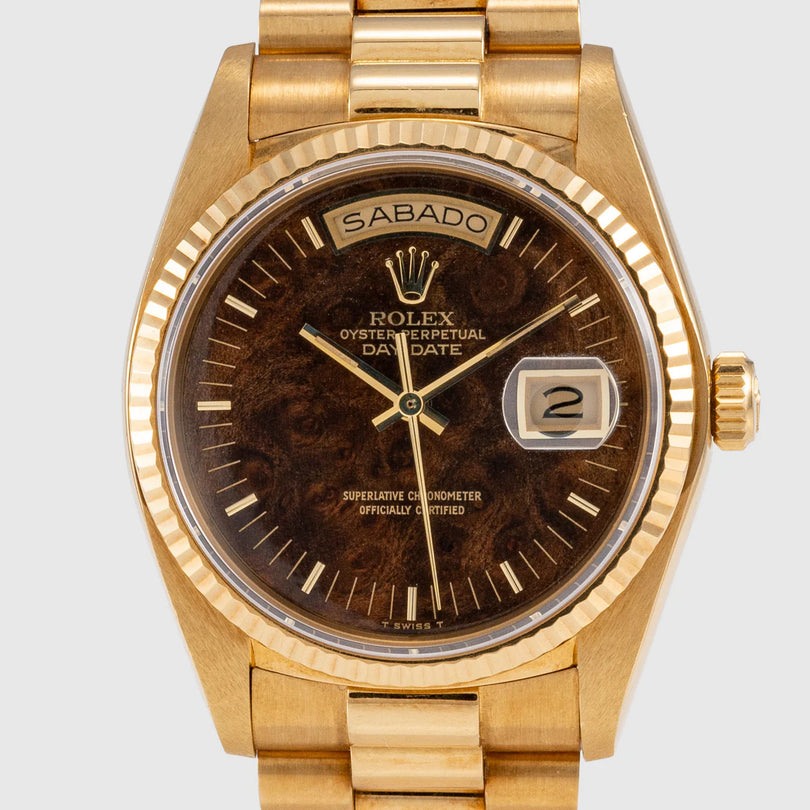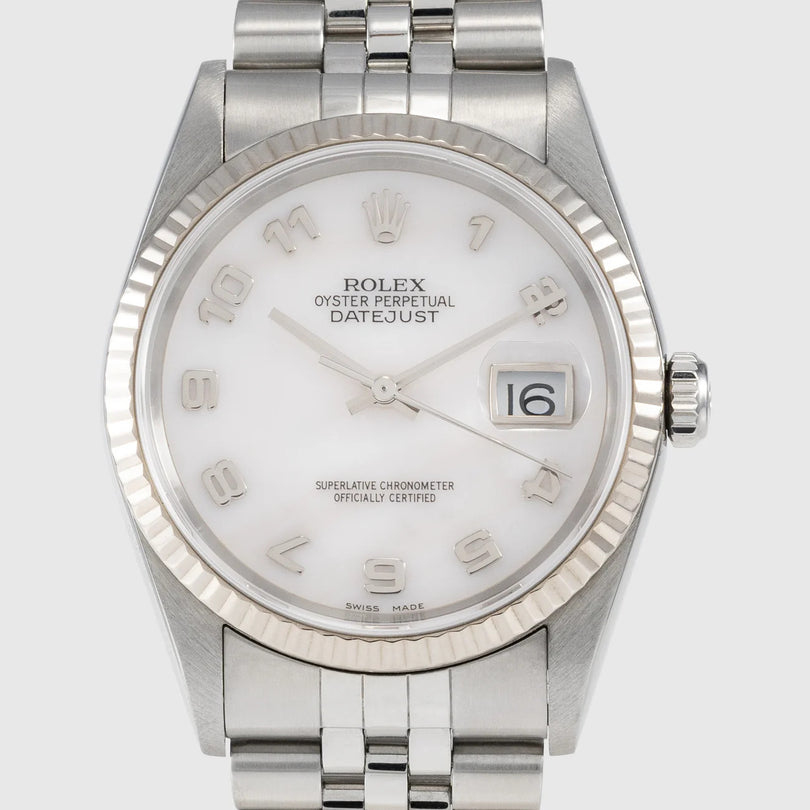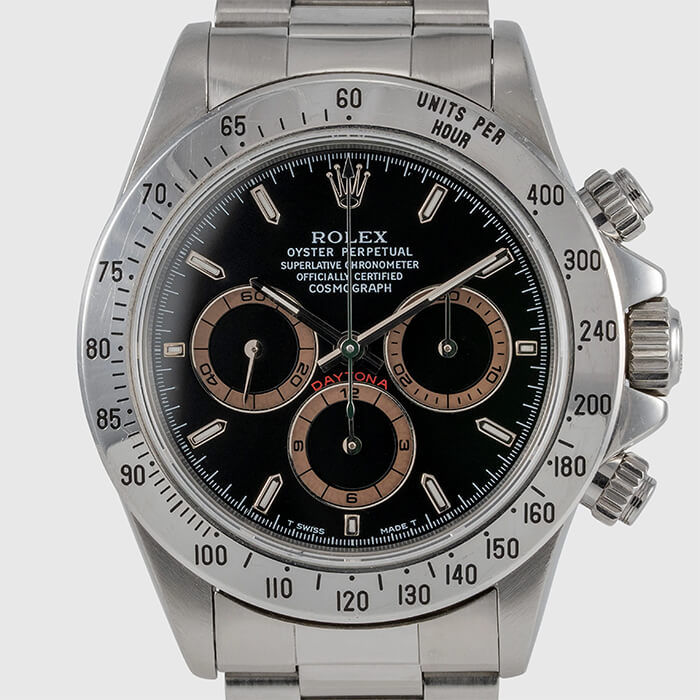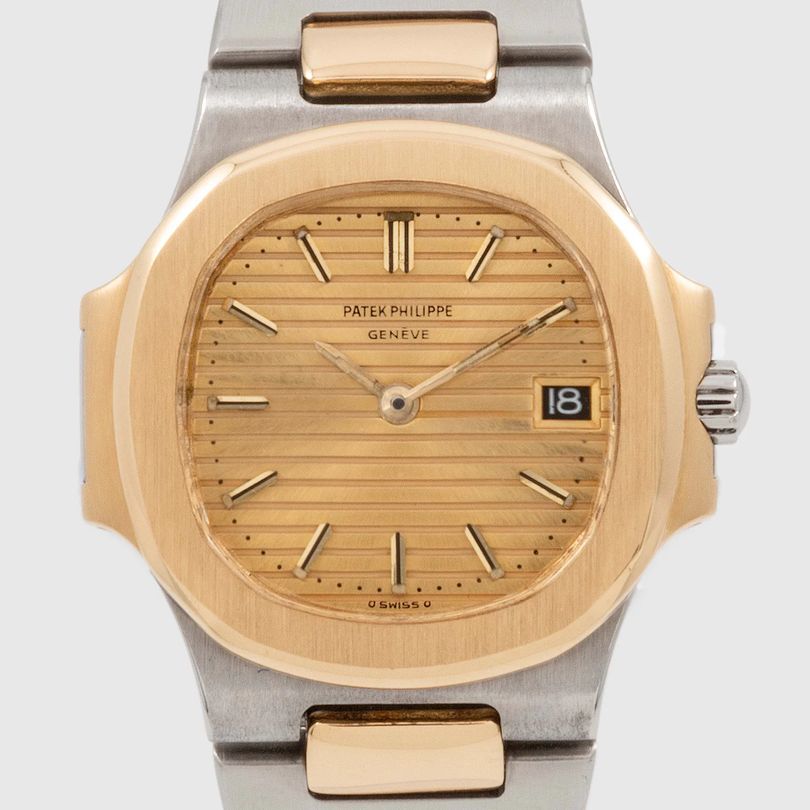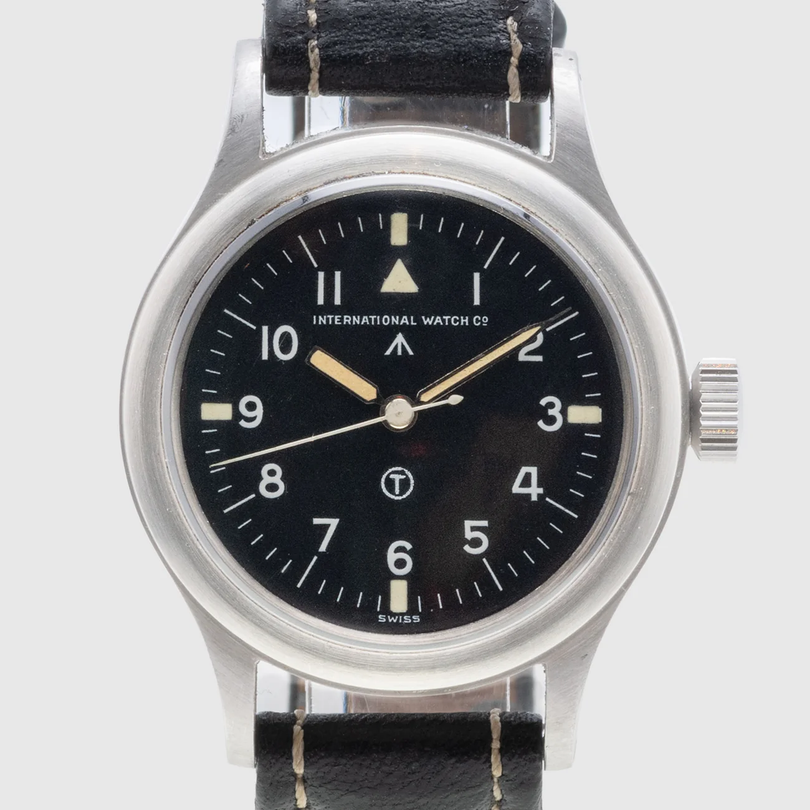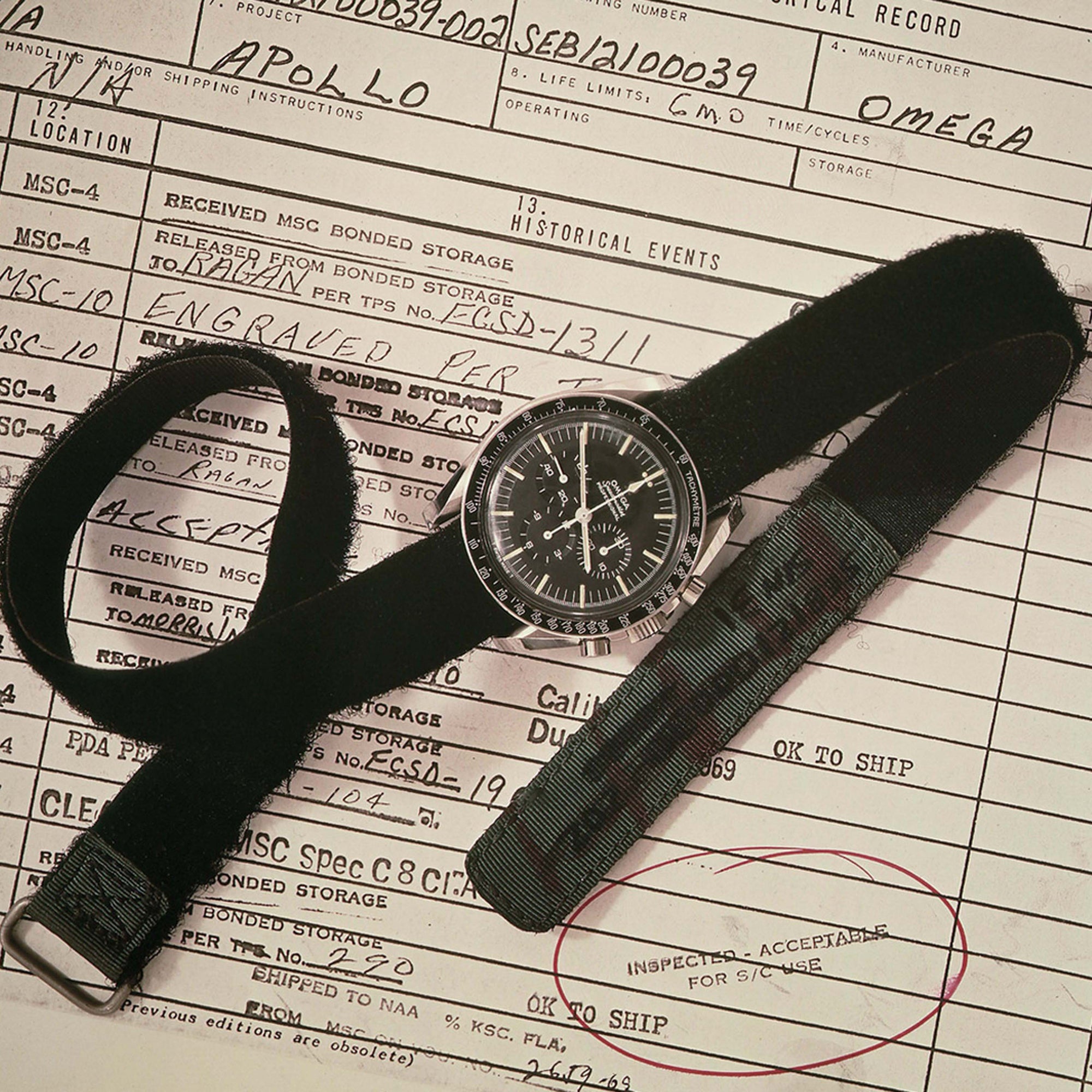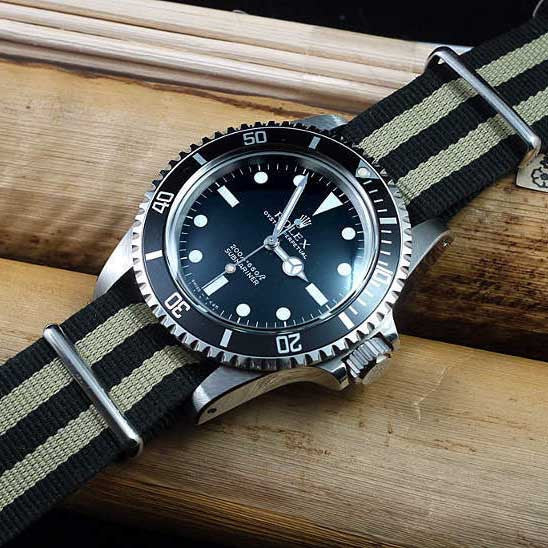In 1957 Omega debuted the Speedmaster as a sports and racing watch. It very soon became a classic. The broad arrow hands, thick lugs and domed Plexiglas crystal complimented the charismatic tachymeter bezel to create a classy, yet sporty wristwatch. Over the years it has developed a loyal following among watch lovers.
It was during the 1960’s, though, that the ‘Speedy’s’ reputation sky rocketed – quite literally. Omega was adopted by NASA for its space program, and the watch became famously intertwined with the early adventures of extra-planetary travel.
This year Omega’s Moonphase Master Chronometer Chronograph opens the next chapter in the Speedmaster saga.
A high definition image of the moon sits at six-o-clock, and it’s on a disc that is crafted in a metalized mineral crystal. Omega can flippantly claim that the quality of the image is so high that you can actually make out an astronaut’s footprint on the surface.
The blue sunburst dial is a nice variation on the typical Speedmaster pallet. What I particularly enjoy are the fine red touches found in the Speedmaster insignia and the crescent moon detail on the date sub dial at 9-o-clock. This is definitely one to earmark for the collection.
As always Omega’s reputation for precision and durability is at stake, and the movement in this year’s new model is up to the challenge. I’m impressed with it, but not surprised – it’s Omega after all.
The caliber 9904 movement is Omega’s latest in-house accomplishment. It contains 368 components and it’s based on the earlier 9300 series, but goes one step further with the moon phase complication.
To be certified as a true Chronometer means it has to first pass the exacting standards of the COSC. But that’s not enough for a watch of this caliber.
Like Omega’s Globemaster it’s also METAS-certified (by the Swiss Federal Institute of Metrology), which is a more thorough and intense certification than the COSC. It is both a ‘Master Co-Axial escapement’ and a ‘Master Chronometer’.
The 44mm case is in steel, and just like the Omega Speedmaster '57 and Omega Speedmaster Co-Axial Chronograph Dark Side of the Moon this new addition to the family also uses liquidmetal in the design. It features a Silicon “Si14” balance spring and Rhodium-plated rotor and bridges.
Two barrels mounted in series give the watch a steady 60-hour power reserve, and the automatic winding can be done in both directions. As required by NASA, the parts are anti-magnetic up to 15,000 Gauss, and built to last, no matter the circumstances.
Needing nothing but a few turns of the crown every 10 years the Omega will remain incredibly accurate. Next to the Moon phase disc you will find the number “29 1/2” printed – a reference to how many days it takes the moon to complete its natural cycle.
What I find refreshing about this year’s model, compared to some of the anniversary and special edition Speedmasters of the past, is that while the NASA connection is undoubtedly there, it’s not overdone. It doesn’t overshadow everything else about the model. The Moonphase Master Chronometer has the right family line, but it’s able to stand on its own simply by being a noteworthy wristwatch.

